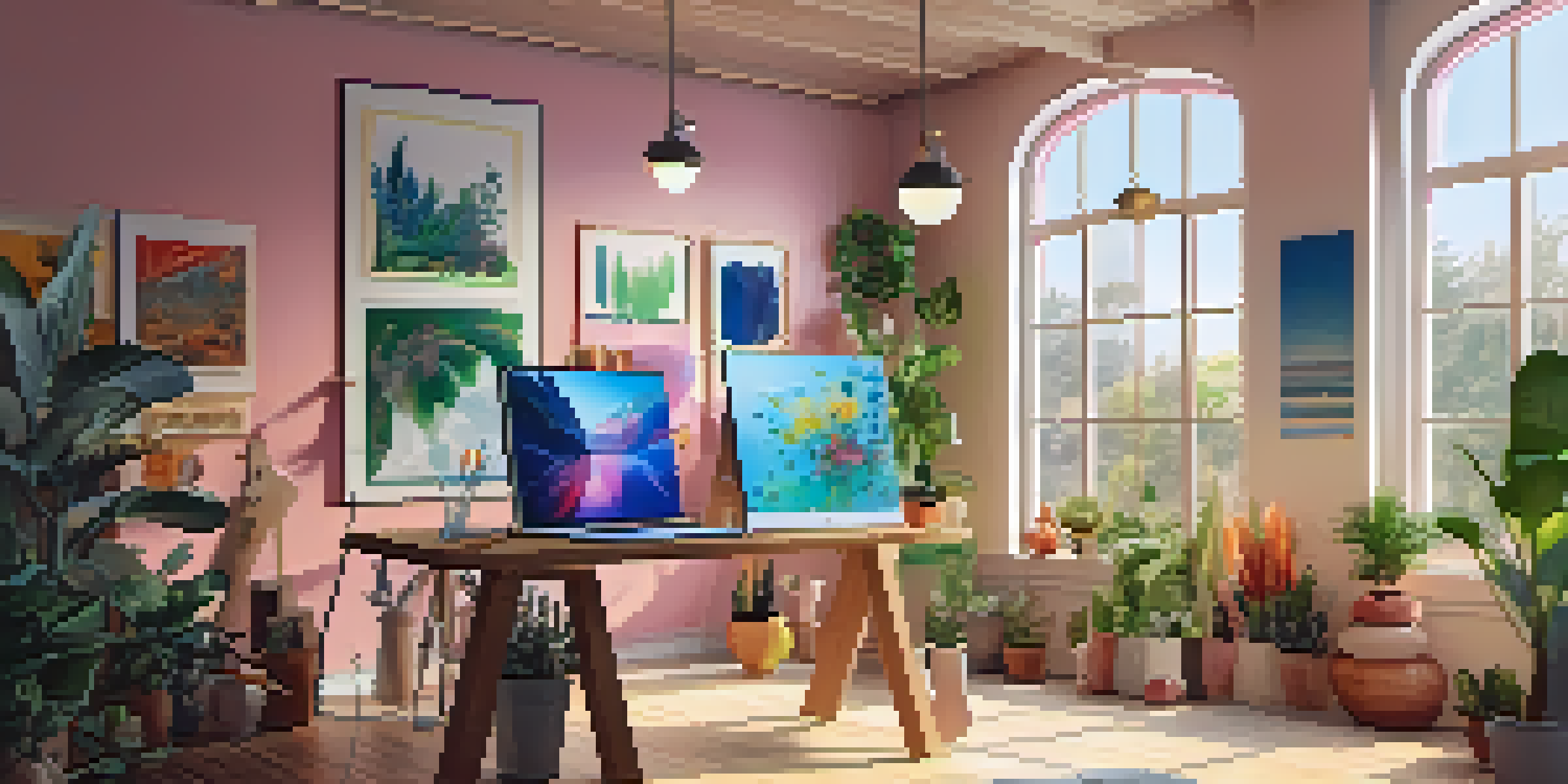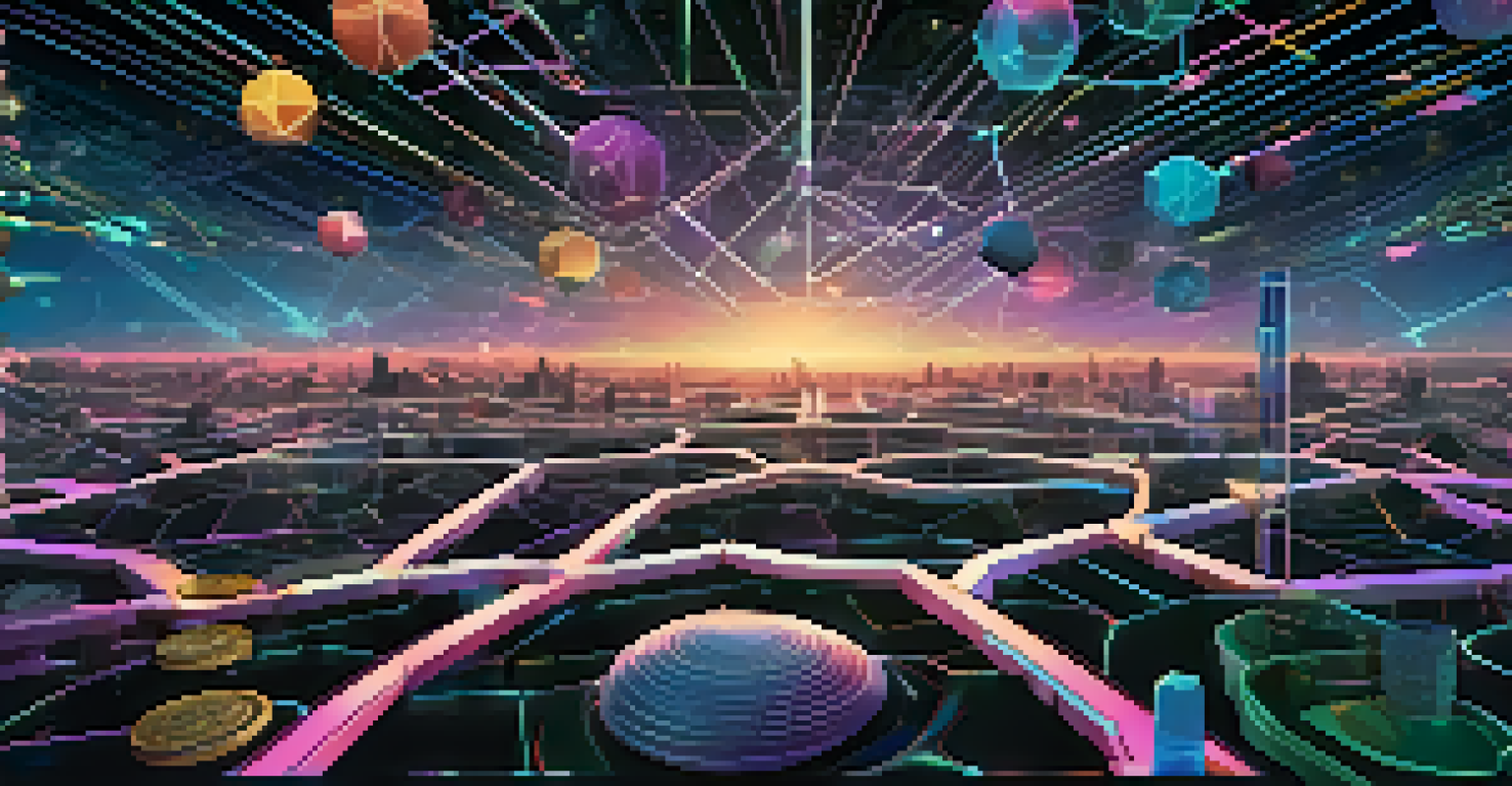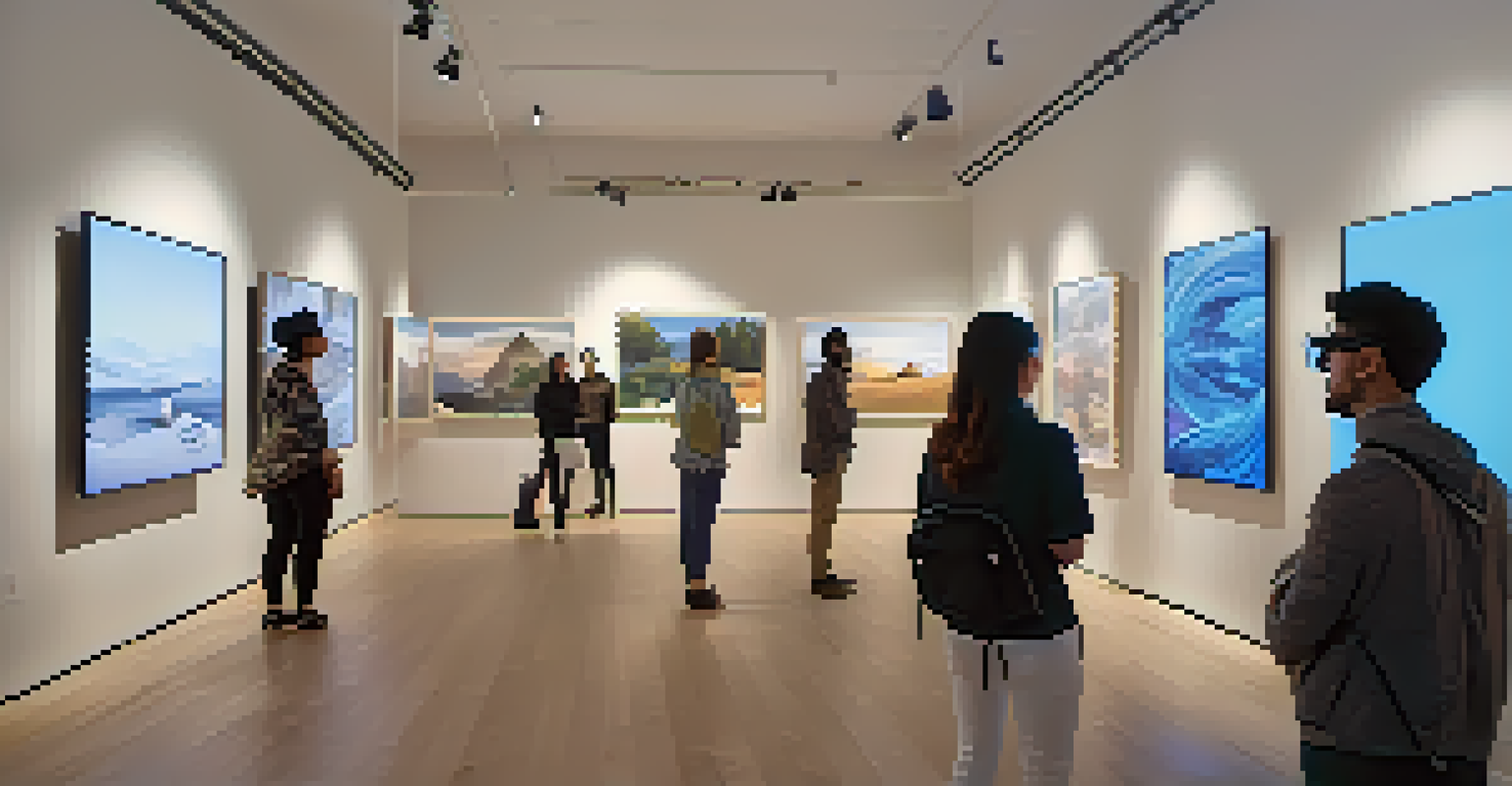Digital Art and NFTs: Understanding the New Market

What is Digital Art? A Brief Overview
Digital art refers to any creative work that is produced using digital technology. This can include paintings, illustrations, animations, and even interactive installations. Unlike traditional art forms, digital art allows creators to manipulate their work with ease, experimenting with colors and forms in ways that were previously impossible.
Digital art is not a new art movement, but rather a new way of creating art that can be shared and experienced in a digital format.
The rise of the internet and digital tools has democratized art creation, enabling more people to express themselves. With software like Adobe Photoshop, Procreate, and various 3D modeling tools, artists can create stunning visuals that can be shared and sold online. This has opened up new avenues for both artists and audiences.
One of the most exciting aspects of digital art is its ability to evolve. Artists can update their works, create versions, or even interact with their audience through digital mediums. This fluidity contrasts sharply with traditional art forms, making digital art a dynamic and ever-changing landscape.
Understanding NFTs: The Digital Ownership Token
NFTs, or Non-Fungible Tokens, are unique digital assets that represent ownership of a specific item or piece of content, often associated with digital art. Unlike cryptocurrencies like Bitcoin, which are interchangeable, NFTs are one-of-a-kind and cannot be exchanged on a one-to-one basis. This uniqueness is what gives NFTs their value in the digital marketplace.

NFTs are built on blockchain technology, which ensures transparency and security in ownership records. When someone purchases an NFT, they obtain a digital certificate of authenticity, which proves their ownership and can be easily verified. This technology has revolutionized how we think about ownership in the digital realm.
Digital Art: A New Creative Frontier
Digital art utilizes technology to create dynamic and easily shareable artworks, revolutionizing artistic expression.
The appeal of NFTs goes beyond mere ownership; they also offer artists new revenue streams. By selling their work as NFTs, artists can retain royalties on future sales, ensuring they benefit from their creations even after the initial transaction. This has led to a surge in interest from both creators and collectors.
The Rise of the NFT Market: A New Frontier
The NFT market has exploded in recent years, attracting both seasoned collectors and curious newcomers. Platforms like OpenSea, Rarible, and Foundation have made it easy for artists to mint and sell their digital art as NFTs. This accessibility has led to a vibrant marketplace where creativity thrives, and artists can reach a global audience.
NFTs are a new way for artists to monetize their work and connect with their audience directly.
In 2021, some digital artworks sold for millions of dollars, catching the attention of mainstream media and the general public. High-profile sales, such as Beeple's 'Everydays: The First 5000 Days,' which fetched $69 million at auction, have positioned digital art and NFTs as serious contenders in the art world. This phenomenon has sparked countless discussions about the value of digital art.
As the market evolves, it's essential for artists and collectors to stay informed about trends and potential pitfalls. Like any emerging market, the NFT space is subject to fluctuations, and understanding the landscape is crucial for success.
NFTs and Artists: New Opportunities and Challenges
For many artists, NFTs present an unprecedented opportunity to monetize their work directly, bypassing traditional galleries and middlemen. This direct-to-consumer model allows artists to engage with their audience in new ways, fostering a sense of community and collaboration. Artists can share their creative processes, receive feedback, and build loyal followings.
However, the NFT landscape is not without its challenges. The environmental impact of blockchain technology has raised concerns, as the energy consumption associated with minting and trading NFTs can be significant. Many artists are now seeking eco-friendly alternatives, such as using blockchains that rely on proof-of-stake systems.
NFTs Transform Art Ownership
NFTs provide a unique way for artists to sell digital works and retain royalties, reshaping the landscape of art ownership.
Navigating the NFT space also requires artists to market themselves effectively, as competition can be fierce. Building a strong online presence and engaging with potential buyers through social media and online communities can make all the difference in an artist's success.
The Role of Collectors in the NFT Ecosystem
Collectors play a vital role in the NFT ecosystem, as they are often the driving force behind the market's growth. Their enthusiasm for acquiring unique digital assets fuels demand, pushing artists to create and innovate. Collectors range from casual enthusiasts to serious investors, each with their own motivations for purchasing NFTs.
For many collectors, owning an NFT is about more than just investment; it's a way to support artists and be part of a burgeoning community. Collectors often engage with artists directly, sharing their thoughts and fostering connections that can lead to future collaborations. This sense of belonging can enhance the overall experience of collecting digital art.
As the market matures, collectors are becoming more discerning. They seek quality, originality, and a personal connection to the art they purchase. This shift encourages artists to focus on their unique styles and narratives, ultimately enriching the NFT space.
The Future of Digital Art and NFTs
The future of digital art and NFTs is promising, with ongoing developments in technology and community engagement. As artists continue to explore the potential of NFTs, we can expect new formats and experiences that challenge our perceptions of art. From virtual galleries to interactive installations, the possibilities are virtually limitless.
Emerging technologies, such as virtual reality (VR) and augmented reality (AR), are set to play a significant role in the future of digital art. These innovations can enhance the way we experience and interact with art, creating immersive environments that captivate audiences. Artists who embrace these technologies will likely lead the charge in redefining the art world.
Collectors Drive NFT Market Growth
Collectors play a crucial role in the NFT ecosystem, fostering community and supporting artists while seeking unique digital assets.
As the NFT market evolves, it's essential for artists and collectors to remain adaptable. Understanding trends and embracing change will be key to thriving in this dynamic landscape. The ongoing dialogue around digital art and NFTs will shape the future in ways we can only begin to imagine.
Navigating the NFT Market: Tips for Artists and Collectors
For artists looking to enter the NFT market, it's essential to research and choose the right platform for their work. Different platforms cater to various audiences and styles, so understanding their unique features can help artists find their niche. Additionally, taking the time to build a personal brand and engage with potential buyers can lead to greater success.
Collectors should also do their homework before diving into the NFT space. Familiarizing themselves with the market, understanding the value of different artworks, and engaging with artists can enhance their collecting experience. Following trends and attending virtual events can also provide insights into the evolving landscape.

Lastly, both artists and collectors should remain aware of the environmental implications of their choices. By supporting eco-friendly platforms and practices, they can contribute to a more sustainable future for the digital art community. This awareness not only benefits the planet but also aligns with the growing demand for responsible and ethical art practices.